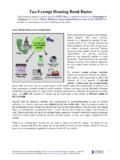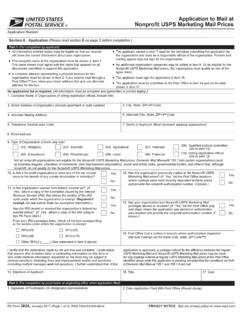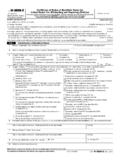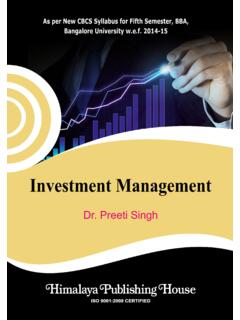Transcription of LAW ON DRAFTING, PLEADING AND CONVEYANCING
1 Research by : Adv. Pooja Jhaveri, Associate Verified by : Adv. Anvee Mehta, Co-Founder & Senior Partner Mentor : Adv. Yusuf Iqbal Yusuf, Founder & Managing Partner Page 1 of 91 M/s Y & A LEGAL, ADVOCATES LAW ON DRAFTING, PLEADING AND CONVEYANCING INDEX Chapter Particulars Page No. 1. Introduction on PLEADING and Conveyance Pleadings Objectives of PLEADING Fundamental rules of PLEADING CONVEYANCING Principles of drafting documents Essentials of Deeds 3 Conveyance Deeds 2 Sale Deed Provisions before incorporating the Sale Deed Modes of transfer Contents of Sale Deed Stamp duty Registration of Sale Deed Agreements for Sale 10 3 Mortgage Deed Difference between Mortgage and Hypothecation Provisions before incorporating the Mortgage Deed Contents of Mortgage Deed Registration of
2 Mortgage Deed Right of redemption Right for foreclosure Difference between Deed of Trust and Mortgage 21 4 Lease Deed Essentials of Lease Provisions before incorporating the Lease Deed 35 Research by : Adv. Pooja Jhaveri, Associate Verified by : Adv. Anvee Mehta, Co-Founder & Senior Partner Mentor : Adv. Yusuf Iqbal Yusuf, Founder & Managing Partner Page 2 of 91 M/s Y & A LEGAL, ADVOCATES Contents of Lease Deed Registration of Lease Deed Execution and Stamp Duty Lease Holding Over Determination of lease Notice to Quit Effects of Rent and Eviction Control Legislation Lease Agreement versus Rental Agreement 5 Gift Deed Provisions before incorporating Gift Deed Gifts under Hindu Law Gifts under Mohammedan Law Contents of Gift Deed Registration of Gift Deed Revocation of Gift Deed Gift Deed over Will 52 6 Power Of Attorney Provisions before incorporating the Power of Attorney
3 Authority of Donee Contents of power of Attorney Registration and Stamp duty 65 7 Will Provisions before incorporating Will Contents of Will Signature and Attestation Registration and Stamp Duty Revocation of Will Probate and Letter of Administration 75 8. Conclusion 90 Research by : Adv. Pooja Jhaveri, Associate Verified by : Adv. Anvee Mehta, Co-Founder & Senior Partner Mentor : Adv. Yusuf Iqbal Yusuf, Founder & Managing Partner Page 3 of 91 M/s Y & A LEGAL, ADVOCATES CHAPTER 1: INTRODUCTION ON PLEADING AND CONVEYANCING Drafting, PLEADING and CONVEYANCING are the three common terms used in the law sector.
4 Drafting refers to the act of preparing the legal document like agreements, contracts and deeds. In drafting besides seeking right words, the draftsman seeks the right concepts. CONVEYANCING refers to the transferring of a real property to its new owner by means of deeds and whereas PLEADING refers to a legal document filed in a law suit. This can be a document pertaining to the initiation of litigation or a document in response to this initiation. (a) Pleadings: The art of drafting the PLEADING has not yet fully developed in spite of the increase in the civil litigation.
5 Many dead sure win cases drag on for years in the Courts only because of the faulty drafting. Hence it is important to understand that PLEADING is an art, of course, and art which requires not only technical and linguistic skill but also an expert knowledge of the law on the given point brought before a lawyer. Even the experienced lawyers and Research by : Adv. Pooja Jhaveri, Associate Verified by : Adv. Anvee Mehta, Co-Founder & Senior Partner Mentor : Adv. Yusuf Iqbal Yusuf, Founder & Managing Partner Page 4 of 91 M/s Y & A LEGAL, ADVOCATES attorneys are not infallible and sometimes they also make mistakes.
6 However, in the matter of PLEADING longer experience and great linguistic acumen are both essential ingredients and ultimately what matters is how clearly and systematically have the facts been presented before the court of law. According to Lord Halsbury Where system of pleadings may exist, the sole object of it is that each side may be fully alive to the questions that are brought to be argued in order that they have an opportunity of bringing forward such evidence as may be appropriate to the issue.
7 When a person comes to seek the assistance of court of law in any matter, he has to prepare a statement of his claims, and the facts on which such claims are founded. Such statements fully drawn up, setting out all contentions are called pleadings . Thus pleadings are the foundations of all sort litigation. No judicial system in the world can do justice in any matter unless and until the court of justice is fully aware as to the claims and contentions of the plaintiff and of the counter claims and defences of the defendant.
8 There can be Civil Pleadings like Plaint, Interlocutory Applications, Execution Research by : Adv. Pooja Jhaveri, Associate Verified by : Adv. Anvee Mehta, Co-Founder & Senior Partner Mentor : Adv. Yusuf Iqbal Yusuf, Founder & Managing Partner Page 5 of 91 M/s Y & A LEGAL, ADVOCATES Petition, Affidavits etc. and Criminal Pleadings like Complaint, Bail Application etc. When the civil codes came to be drafted, the principles of pleadings were also given statutory form. Vide Order VI Rule 1 PLEADING shall mean plaint or written statement.
9 The elaborated definition of PLEADING is that pleadings are statements, written, drawn up and filed by each party to a case, stating what his contentions will be at the trial and giving all such details as his opponent needs to know in order to prepare his reply for the same. Objectives of Pleadings: The whole object of pleadings is to give fair notice to each party of what the opponent s case is. Pleadings bring forth the real matters in dispute between the parties. It is necessary for the parties to know each other s stand, what facts are admitted and what facts are denied, so that at the trail they are prepared to meet them.
10 Pleadings also eliminate the elements of surprise during trail besides eradicating irrelevant matters which are admitted to be true. The facts admitted by any parties need not to be pursued or proved. Research by : Adv. Pooja Jhaveri, Associate Verified by : Adv. Anvee Mehta, Co-Founder & Senior Partner Mentor : Adv. Yusuf Iqbal Yusuf, Founder & Managing Partner Page 6 of 91 M/s Y & A LEGAL, ADVOCATES Thus, pleadings save the parties much bother, expense and trouble of adducing evidence in support of matters already admitted by a party, and they can concentrate on their evidence to the issue framed by the court in the lights of facts alleged by one party and denied by other party.






